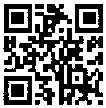 Our school is now making full use of the Edmodo website to share our class info with students, and particularly parents, confidentially. We realise most will struggle with more than basic info in English, but that is all we really need them to access. For example, what new vocabulary or language targets students have encountered, what pages are set for homework, which reading book we are on etc. Teachers will also leave comments eg who won a particular game, who did especially well in an activity, if someone was late or absent.
Our school is now making full use of the Edmodo website to share our class info with students, and particularly parents, confidentially. We realise most will struggle with more than basic info in English, but that is all we really need them to access. For example, what new vocabulary or language targets students have encountered, what pages are set for homework, which reading book we are on etc. Teachers will also leave comments eg who won a particular game, who did especially well in an activity, if someone was late or absent.The site also allows us to add value to classes by posting files to particular online classrooms - which only students & their teacher can access. It is a safe, closed, online room. So teacher can share just about anything - writing templates, copies of extra resources used in class, recordings of students doing activities, songs we have used, photos & screen shots...you name it! We can also share links to useful/interesting websites. This is particularly useful with kids` classes as we can direct parents to flashcards on Quizlet very easily. We can also embed RSS feeds eg from our own blog, or from items pertinent to particular classes. A football mad teen? When Saturday Comes magazine or The Football Ramble podcast. How cool is that?
 For all the fancy online stuff though - which I am convinced has an important place in our school's positioning in the EFL market - there is no replacing my super huge 1G blackboard! When I taught at uni, I hated using the things - precisely because I had to use them, and I would go home looking like I had a terminal dandruff condition. Besides that, my handwriting was slow and scratchy. Time is suggesting my younger learners actually find it a reassuring leveller, as everyone's writing looks a bit tatty. Message to self: if handwriting is important on a board, rule on permanent lines to manage letter sizes (Japanese scripts do not vary in height/pitch) & prevent 'rollercoaster/drunk spider' scripts.
For all the fancy online stuff though - which I am convinced has an important place in our school's positioning in the EFL market - there is no replacing my super huge 1G blackboard! When I taught at uni, I hated using the things - precisely because I had to use them, and I would go home looking like I had a terminal dandruff condition. Besides that, my handwriting was slow and scratchy. Time is suggesting my younger learners actually find it a reassuring leveller, as everyone's writing looks a bit tatty. Message to self: if handwriting is important on a board, rule on permanent lines to manage letter sizes (Japanese scripts do not vary in height/pitch) & prevent 'rollercoaster/drunk spider' scripts.Consider this: if you do have a blackboard/whiteboard and you want to give your students ownership of it, put the damn thing on the floor! If it is at a comfortable height for you, you can be sure only your tallest students will be able to use it...
 Also, get 'fat' chalk for little hands.
Also, get 'fat' chalk for little hands.Getting students to operate at the board does quite a lot. For a start, it shifts the focus from the book/table interface and requires a lot more co-operation. I like my children to put new vocab on the board (and dictate spelling to each other) before we go to our picture dictionaries/vocab books and write them down. Simple step here avoids rote copying, makes the job a team effort and encourages peer observation/criticism (not an aim of itself, but makes me less ogre-ish) of writing. Helps me see if anyone is still struggling with ABCs...and keeps stronger students from racing ahead. Child at the board cannot access book (on the table)...kids at the table can't memorise their (next) bit AND help buddy at the board simultaneously. I find my children naturally reading board work out loud as they then try to relocate words to images & order them alphabetically ( a subliminal benefit) back in their books at the table. Reading each others's writing, adding a memory stage, and doing this aloud adds much more chance of cross-pollenation of learning ideas, tips, and short-cuts (OK, L1!)

So what did we do this week so far at the chalkface?
- "Can you...............?" questionnaire
- "Next word" listening challenge from OUP Story Tree (teams)
- "Do you like ..............? questionnaire


operate at the board will help to encourage their public speaking skills, they will bcme more enthusiastic later.
ReplyDeleteQuestionnaire Template